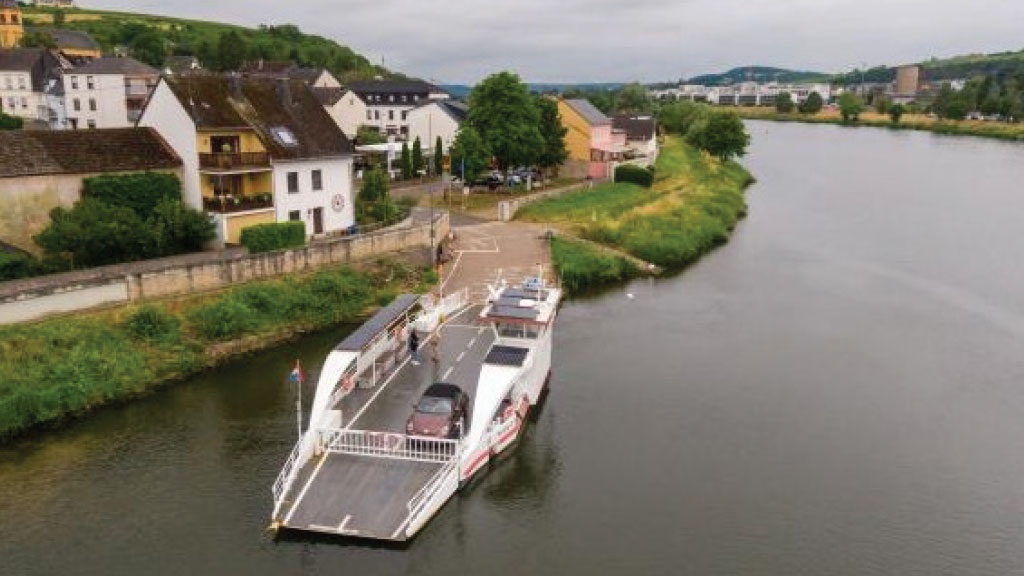The Sankta Maria solar-electric ferry is the world’s first fully solar-powered electric car ferry. It was co-funded from the EU’s Interreg program. It connects Germany and Luxembourg.
The European Commission’s 35-point action plan includes boosting the role of inland waterway transport in their mobility and logistics systems. According to the commission, the core objectives are to shift more cargo over Europe’s rivers and canals and facilitate the transition to zero-emission barges by 2050. This is in line with the European Green and the Sustainable and Smart Mobility Strategy, which set the goal of increasing transport by inland waterways and short sea shipping by 25% by 2030, and by 50% by 2050.
“As one of the most CO2-efficient transport modes available, inland waterways have the potential to play a central role in decarbonizing our transport systems,” Commissioner for Transport, Adina Vălean said. “Yet today, our canals and rivers carry just 6% of EU freight. With an inland waterway network of 41,000km spanning 25 Member States, there is scope to do a lot more; both along our TEN-T corridors and in inner cities, where inland waterways can help to green the last mile of city logistics.”
The new action plan will put in place the conditions for the inland waterway transport sector to better seize the opportunities linked to the shift towards a zero-emission and digital economy. Among the actions proposed is the revision of the Combined Transport Directive, which, along with support for investments towards trans-shipment capacity and inland multimodal terminals, will enable the greater integration of inland waterways into a modern, trans-European intermodal transport system. The action plan also includes measures to accelerate and stimulate investments towards the development and deployment of innovative, zero-emission and zero-waste technologies for vessels and inland ports, and helping the sector keep up with digital developments. They say this will be key to ensuring its long-term sustainability and competitiveness, while opening up attractive new job opportunities for a skilled workforce.
